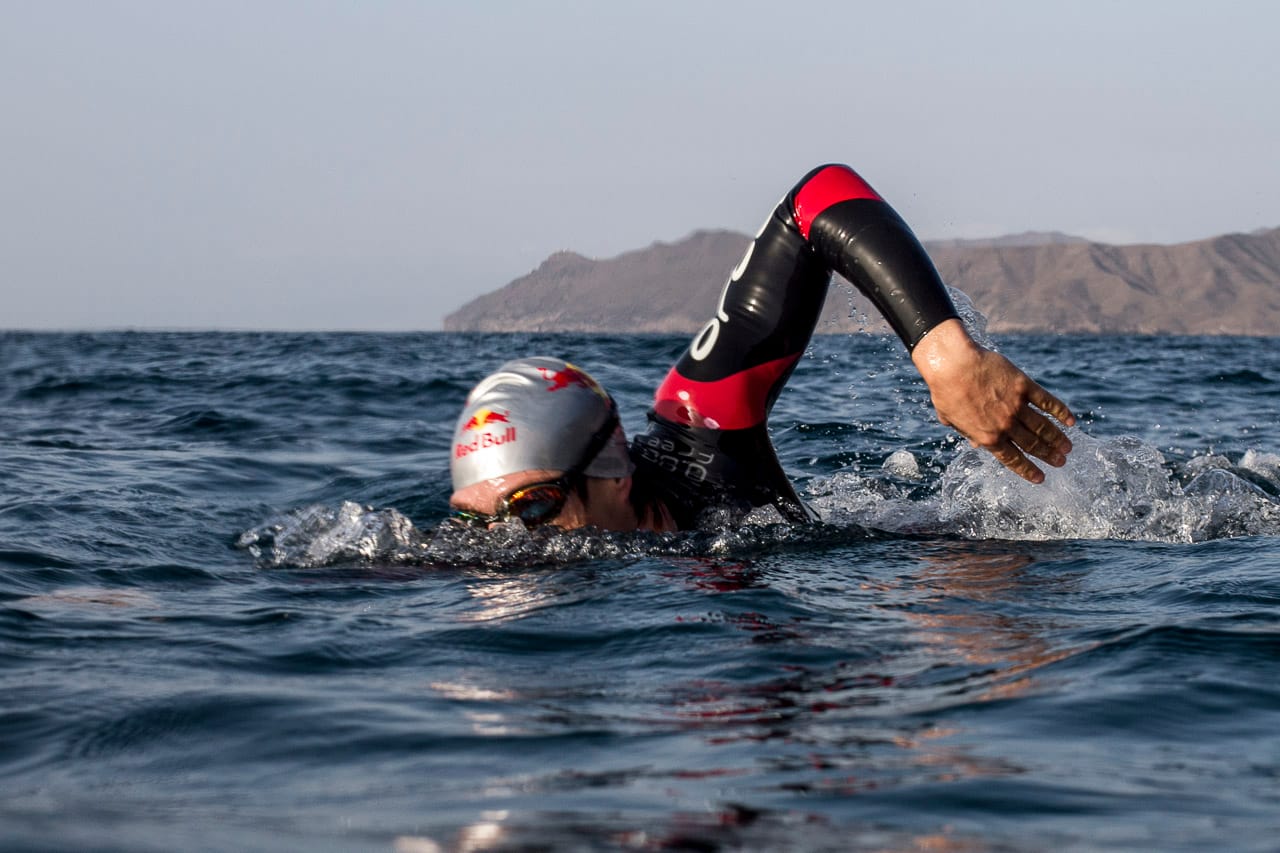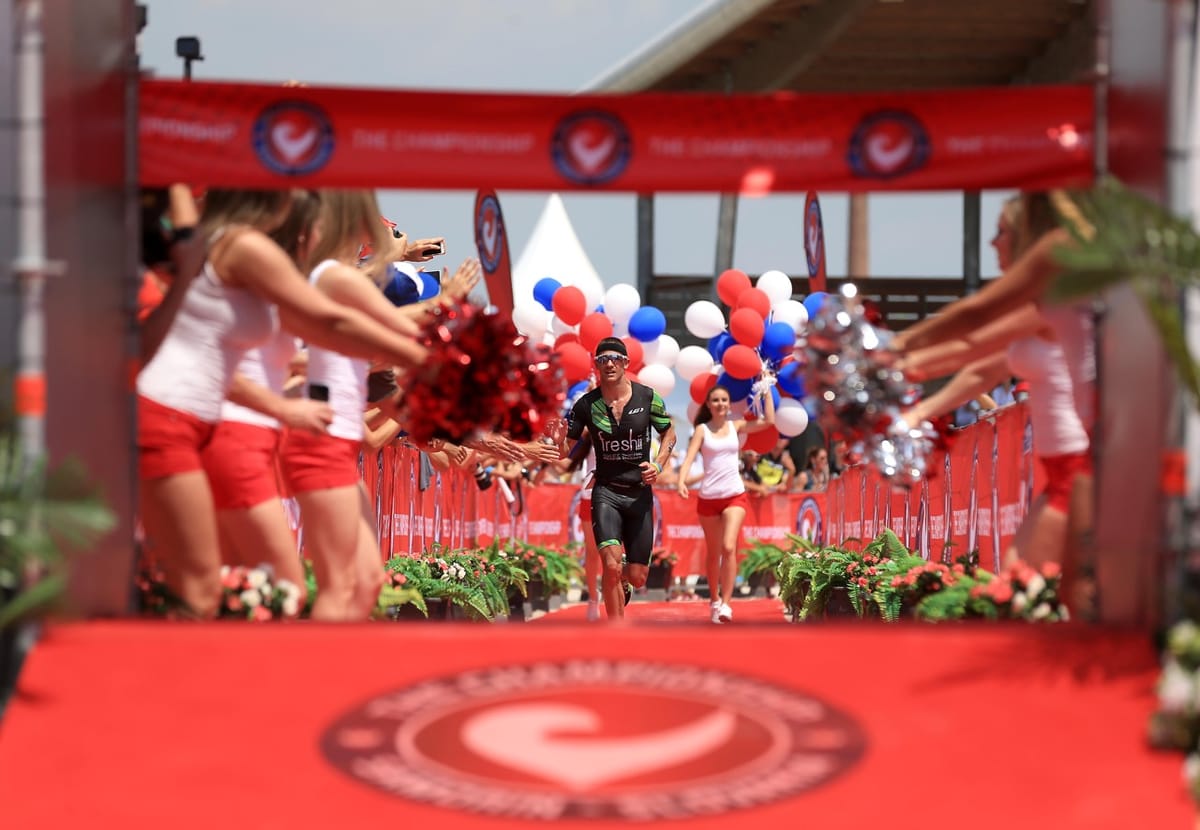Before I start, the question I’m going to try an answer is; Is the Orca Predator wetsuit suitable for anyone, and anyone I mean age-group athletes? But before I start I have to admit that I took up triathlon, at the start of my mid-life crisis, so swimming never came, and it still doesn’t, naturally to me. Combining this with my growing up in Northern England, where the only pool you get access to as a kid is vomit based, outside a pub after one too many pints of Tetleys, my swimming skills are distinctly average – something my swim coach can well and truly attest to. I spend most of the swim squad wistfully wondering why I’m being lapped by a 12-year old doing breaststroke, so my ability to review a wetsuits ability to improve your top end by milliseconds is severely compromised. I can speak, however, with high confidence as to a wetsuit’s ability to speed up an average age grouper and get you to your bike in as top form as possible.
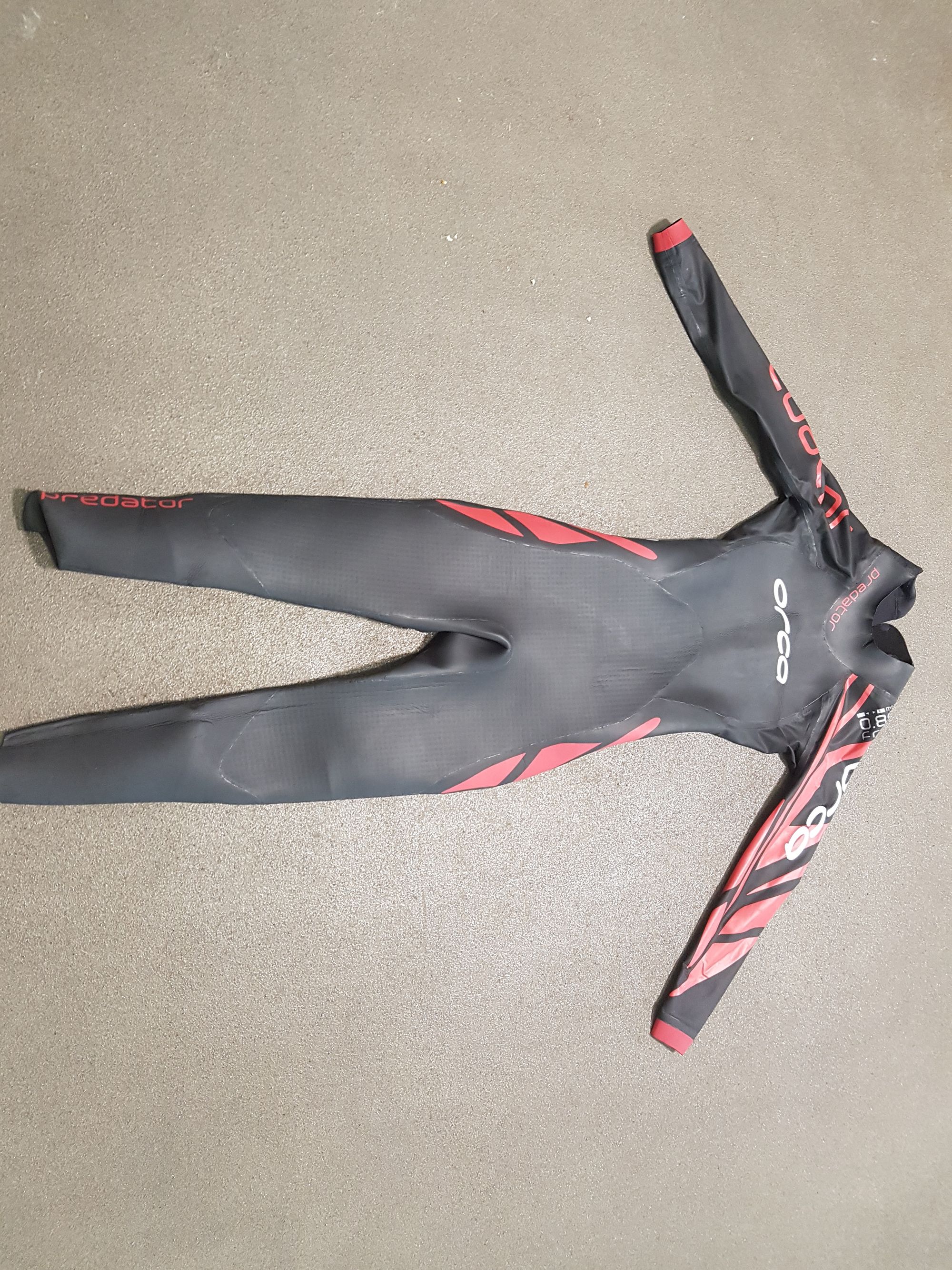
A few years back I went through the painful process of determining the right wetsuit for me. As an 80kg, 190cm (6ft 3), guy, there are a lot of MT choices available. I looked at BlueSeventy, Zoot, and 2XU, and finally settling on the Orca range, because of the 2015 Predator. I’ve swum in every Orca wetsuit there is from the top end Alpha (aimed towards the mystical ‘great swimmer’ with limited buoyancy support – damn them to hell!) through to the lower end Orca 3.8 (aimed more towards beginner swimmers with lots of lift, too much for me).
I have always found the Predator to be a great middle of the pack athlete wetsuit choice, with buoyancy around the legs where you need it, but with phenomenal freedom in the upper body and arms provided by the .88mm thick neoprene around the arms – so it’s been my go-to suit for a few years now.
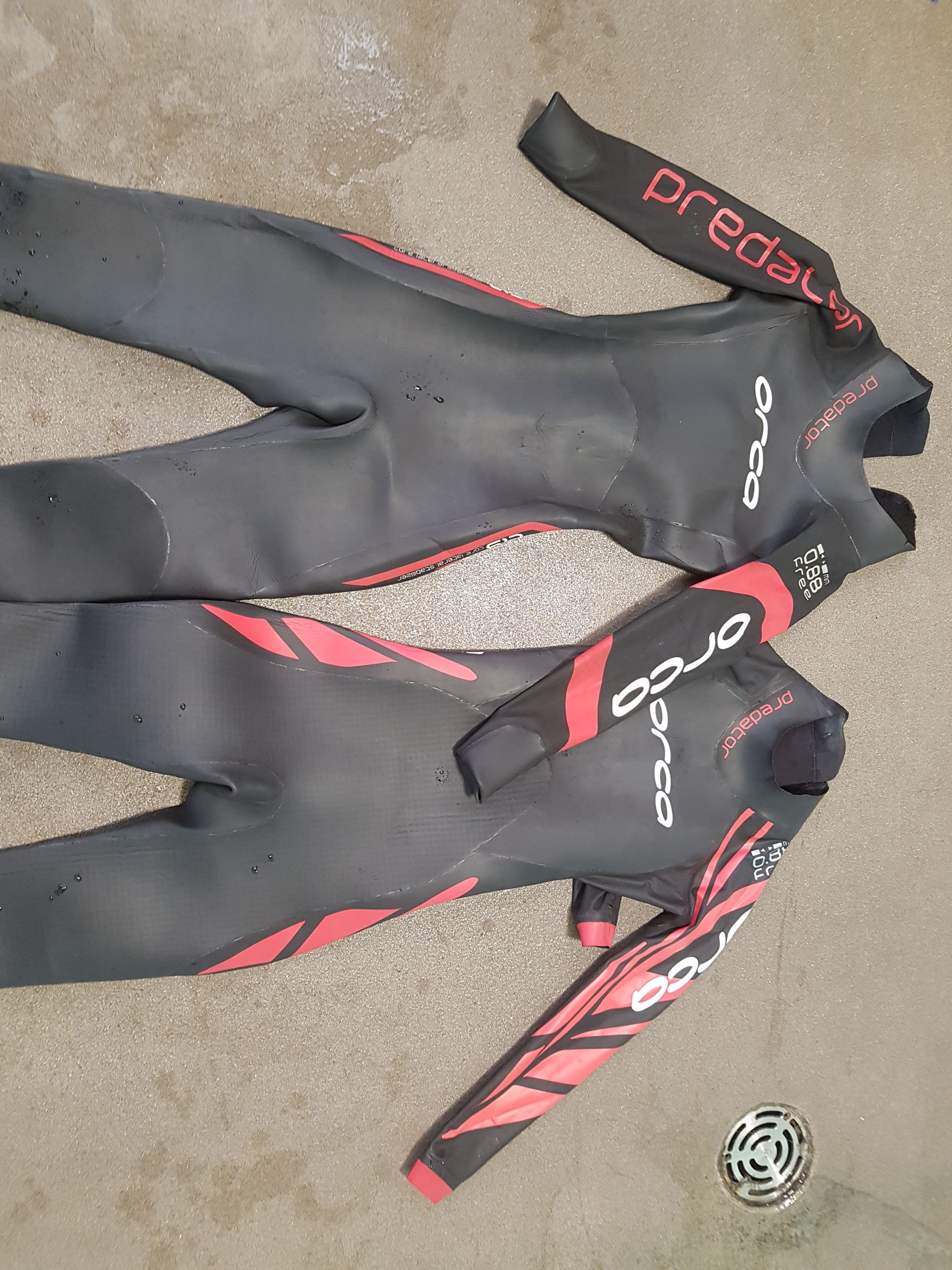
How much rubber?
The 2017 release improves on the previous year’s release in several ways, firstly it extends the .88mm neoprene to cover the upper back, around the lat area, this further extends that feeling of ‘freedom’ that you get swimming in this suit.
The .88mm Neoprene can often put a lot of people off, its very thin and the suit is disconcerting to put on and rush off in transition. My advice is always to use a set of gloves to put the suit on – gardening gloves do the trick. This will go a long way to protecting the suit pre-coffee.
From a longevity standpoint, I have raced in the 2015, 2016 and 2017 versions of the suit and never had any of them rip or get a hole in them. This includes my panicked and often delirious transitions and the dreaded wetsuit strippers/rippers, so touch wood, I’ve never had a problem with the thin material.
Features of the Orca Predator
Another key feature this year is the inclusion of a titanium coating on the inside of the suit which helps with keeping you warm in the sea. This for me was an absolute killer benefit, as most of our swim training is conducted in the chilly waters of Melbourne so jumping in the sea is akin to re-enacting a scene from Titanic.
I swam in the previous year’s model and the new 2017, and you can certainly feel a difference, so much so that I managed to swim an extra 20 minutes before my usual winter ritual of retiring to the hot shower weeping like a small child.
I always found that previous years collar rubbed a fair bit, not so with the 2017 which comes with a new design and better internal coverage. They have also included arm cuffs to help keep out water, which was a small niggle in last years suit.
The Orca Predator includes a ‘Core Stabilisation Technology’ which helps support rotation during your stroke and enable buoyancy in the core and legs. They have increased the buoyancy around this area, which is very noticeable, my kick is straighter with my heels often clipping the top of the water, so a great improvement on body position.
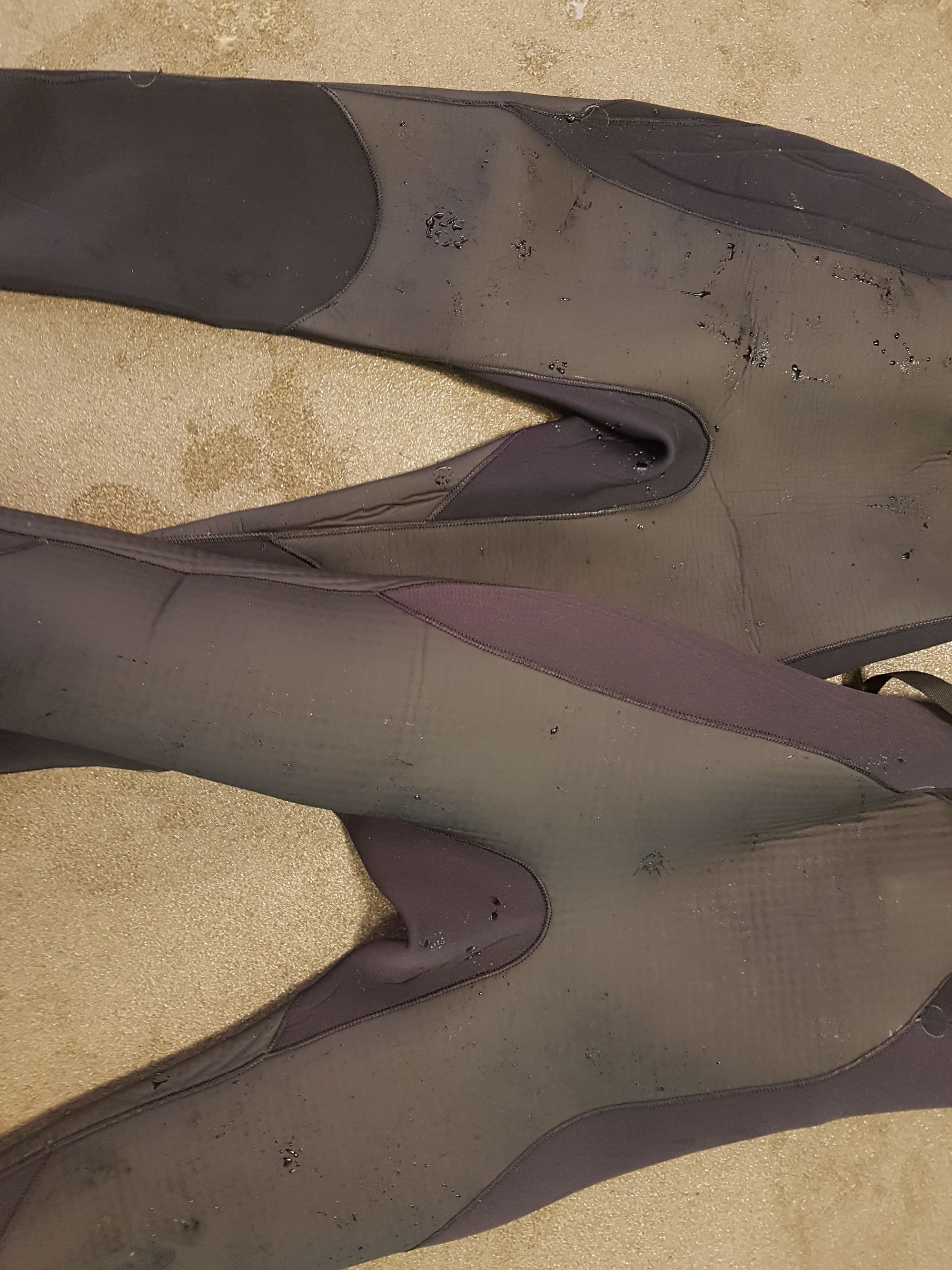
Do top end wetsuits mean no flotation?
So as an average age grouper will it give you that boost your looking for in an age group swim, beyond a reasonable ‘nee well priced’ wetsuit? Well for me I would have to say yes. The buoyancy in the legs is just the right amount, especially at Ironman distance when you start to fatigue. The freedom you get in the shoulders and now back, really allows you to stretch out that stroke far beyond what you get in a traditional 2mm or 5mm wetsuit. Its very much a personal experience though, so as always try before you buy with a wetsuit, as my experience may be different from yours.
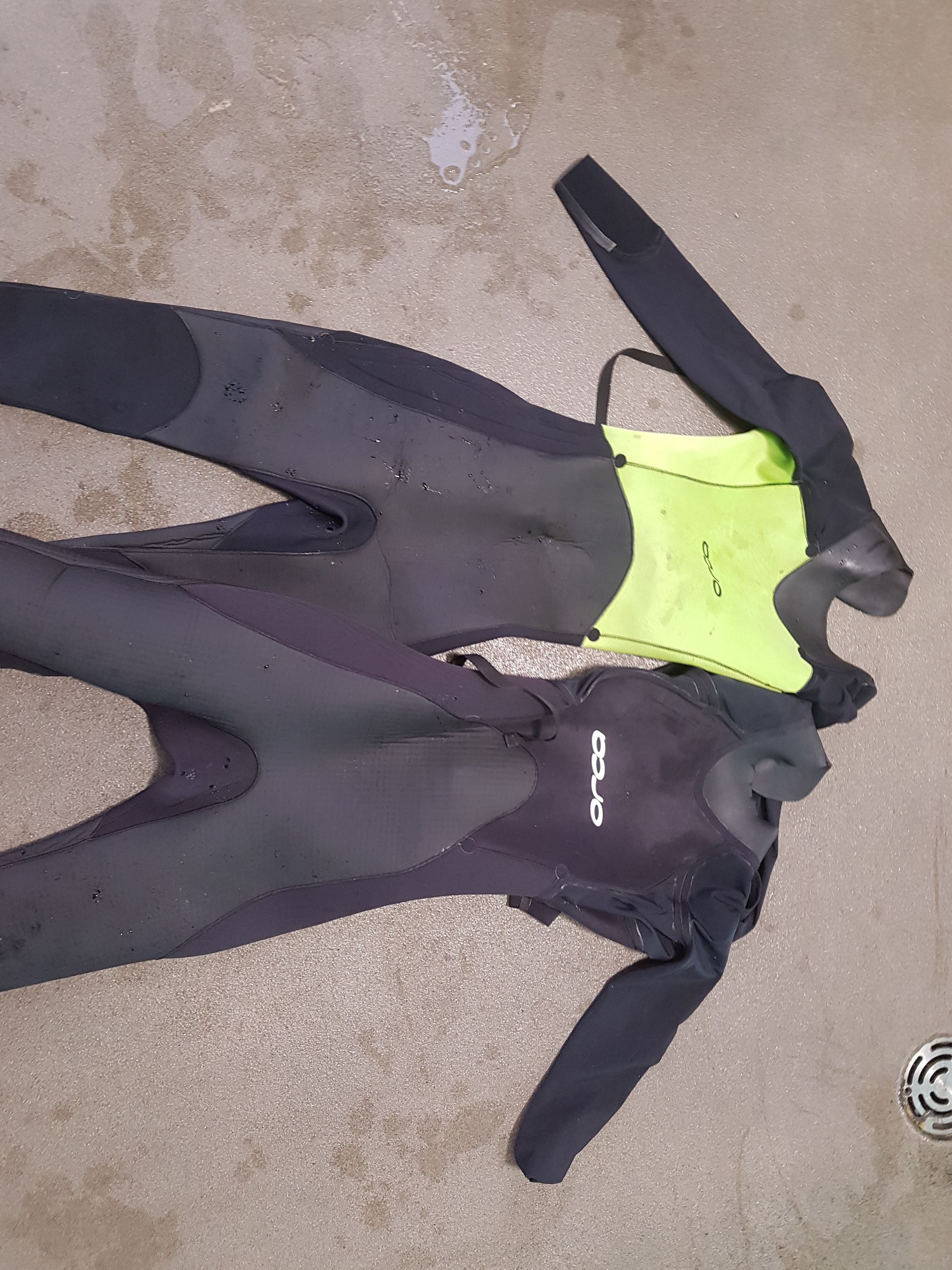
Overall
I’m struggling to say anything wrong with this wetsuit, and it is phenomenal, further improved with some tweaks around design and heat retention/dissipation.
The only downside I can think about is the price, at $1045 AUD and $945 street, it’s a hell of an investment, but you get what you pay for. I challenge you to swim in a cheaper wetsuit first then jump into the Orca Predator, and you will be selling your kidney on eBay quicker than you can say .88 Yamamoto rubber.



